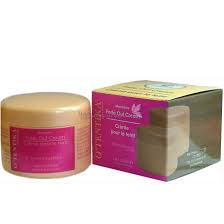How to make your own apple cider vinegar
This article is on how to make your own high-quality Apple Cider Vinegar at home. If you are not sure about why you should bother about apple cider
vinegar, please read my other articles about the Benefits of Apple Cider Vinegar on skin.
I knew a lot of people do make their own Vinegar at home, but I actually never gave it a thought until a few friends requested that I write about it. It was exciting to know that I can make ACV with apple scraps. My toddler princess loves eating apples a lot but not with the peel, besides, she always ends up making a mess of it on the floor. I usually would clean up the scraps which have been going into the trashcan but thanks to this new discovery, I can now produce my favourite face toner and salad dressing at the highest quality and lowest cost imaginable.
Organic Apple Cider Vinegar has so many benefits and some people are anxious to try it, but it's not always possible to buy it locally. If you live in an area or country where
organic apple cider vinegar is difficult to find, here's a super-easy recipe on how to make apple cider vinegar at home!
I won't fail to mention though that there are different methods of making Apple Cider Vinegar which I did read about. This, however' is the easiest way. I love it easy and I bet you do if you've got a super tight schedule like I do. Another reason I like this method is that I get to eat my apples too. In comparison to the other methods, this method can be considered faster,
taking around two months to have your raw apple cider vinegar ready.
EASY STEPS TO HOMEMADE APPLE CIDER VINEGAR
The following steps must be followed to make a high-quality cider vinegar at home:
1) This step starts with planing. Plan making cider vinegar at home at a time when you are looking to use apples for other things like making apple juice, apple pies or fruit salad. Find a big wide-mouthed glass jar and collect all the peels and cores of your apples (the ones you usually throw away) in it. You can just leave the bottle on your kitchen table uncovered and away from children, at normal room temperature. You will notice the scrap turn brown depending on how warm your kitchen is. This is exactly what
you want.
2) After you have collected enough scraps, add water enough to the jar to completely cover the scrap. Stir the water to mix the content well. Now cover the jar with either a cotton cloth or paper towel and put a rubber band around it. (I am using my normal kitchen towel for this). This will allow vinegar bacteria
and oxygen from the air to get to the surface of the cider without being contaminated with flies and other pests.
You can continue to add scraps for a few more days if you want. If
you’re going to do this though, be sure to not fill the jar right up,
leave some room for the new scraps.
3)Store the bottle in a warm and dry place. I think your kitchen cupboard closer to your cooker would be perfect for this. You’ll notice the contents of the jar starts to thicken after a few days and a greyish scum forms on top. When this happens, stop adding
new scraps and allow the jar to sit for about
two to three weeks, so that fermentation can take place. This will change all of the fruit sugar to alcohol. (One might easily forget the jar if it is placed at a corner you don't visit frequently, you can ask someone to remind you or just set your phone reminder to do that.)
4) The next step would be to change all of the alcohol to acetic acid. For this, you would first need a
strainer. Strain out the liquid into another glass jar. You can discard the scrap and use the same jar. (You can use the solids as a compost for your
garden
plants, no waste at all). Cover with the cloth again and put in a warm, dark place away from sunlight, which will interfere with the action of the bacteria. The optimum temperature for vinegar making is about 29* C (85 F).
5) Now let the liquid rest for 4 weeks. During this longer storage, visit the jar every day and give it a nice stir. THIS IS IMPORTANT. While making apple cider vinegar at home is easy, remembering to stir it every day isn't that easy.
After letting it sit for one month and stirring it daily, the liquid will be cloudy and there would be some gelatinous white film floating on top of the liquid,
this is the mother of vinegar, which is produced by the vinegar bacteria as it converts
the alcohol into acetic acid (vinegar). If you don’t
like the cloudiness though, straining it through a paper coffee filter
will remove most of the sediment.
6) The final step is taste-checking and clarifying the acetic acid (Vinegar) to prevent further fermentation and decomposition. After about a month you can start taste-checking it. By now, it would have achieved the required acidity. If not, then leave it for another week, and taste it again. If it still doesn't have the consistency you want, wait for another week. When it’s just
strong enough for you, strain out the apple scraps and bottle the vinegar.
If you intend using ACV on your skin, it is necessary to get that strong acidic (sour) taste, If the taste is too strong, you can always dilute with water. It is better to have a
stronger sour taste than a sweet taste. No odour or flavour of alcohol should be present
Once you are satisfied with the taste, your apple cider vinegar is
ready for your skin and of course, your meals.
Once completed, store the apple cider vinegar into clean long-necked glass containers with plastic screw-type caps and refrigerate.
Important tips!!!
1) Two factors require special attention when making vinegar at home:
oxygen supply and temperature. Oxygen is spread throughout the mixture by stirring it daily and by letting air reach the fluid through a cloth filter, which is used in place of a regular lid. The temperature of fermenting cider should be slightly warm. Lower temperatures do not always produce a usable
vinegar, and higher ones interfere with the formation of the "mother of
vinegar."
2) Do not use a metal container when making vinegar; the acid in the mixture will corrode metal or aluminium objects. Glass, plastic, wood, enamel,
or stainless steel containers should be used for making or storing vinegar. The same holds true for making or storing foods that have more than 1 Tablespoon of vinegar in the recipe.
3) Be sure to
keep your bottles out of direct sunlight, which will destroy the flavour,
acidity, and colour of the vinegar.
4) Please set up an alarm on your phone so that you are reminded to stir it regularly. Preferably, keep the jar where you can see it every day so you will remember. Don't overdo it. Once a day is enough. If you disturb the liquid too often, it may affect its quality.
5)Finally, if you do not have any fresh apple you can also use freshly pressed apple juice, which is additive-free and has not been pasteurised. This type of juice is readily available from your local fruit store.




Comments
Post a Comment